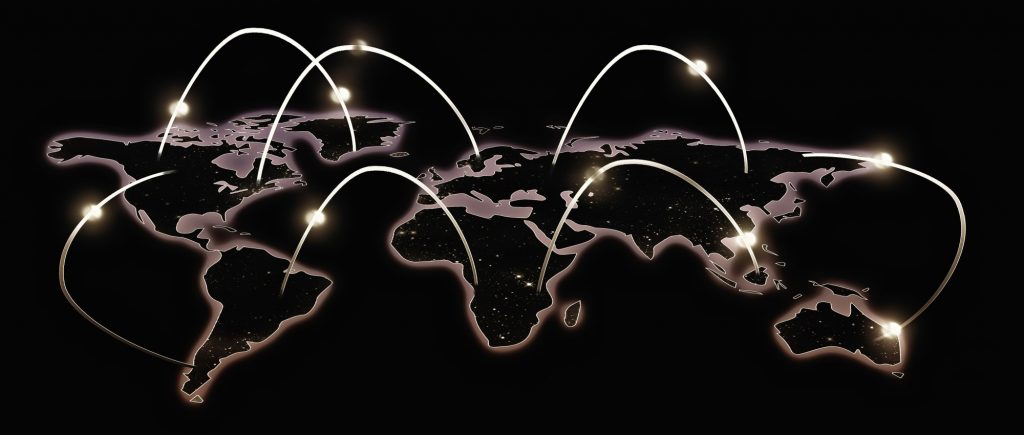
Nowadays, using cell phones, the internet, and other forms of wireless communications has become second nature. We depend on it so much that we rarely take the time to consider how it all works.
Most of us just call our local cable provider and get ‘hooked up’ and that is that. The younger generations probably can’t remember a time before the internet but all of us tend to take it for granted.
What are the forces at work that allow us to watch cat videos on the train? Read ahead to learn the basics of communications infrastructure.
Our Need for Connectivity
Currently, over two billion people use the internet around the world. It is amazing to imagine how you can easily connect with someone living in the Chinese countryside.
It was only a matter of decades ago when people barely made contact with anyone from outside of their city, let alone other countries.
Now, we depend on the internet for more than sharing with family and making friends. Most businesses depend on the internet to perform their services.
Describing the Internet
Where is exactly is the internet located. If I got upset and wanted to write an angry letter to the CEO of the online world, who should I send it to?
Should it be Bill Gates, the founder of Microsoft?
Of course, no one really owns or controls the internet. It has no particular. ‘headquarters’. Therefore, It can be described as ‘decentralized’.
In a Nutshell
The internet is a computer network. In fact, it is the biggest and most popular one in the world.
Many of us access the internet using a web browser. But that is only one application of many that use the internet as a means to share information.
Email and music players are other platforms that use much of the same technology.
The Origins of The Internet
In the late 60s, the US military’s Advanced Research Projects Agency (ARPA) provided funding to a group of scientists to create a network to share data. The created ARPANET, a network for academics.
Vint Cerf and Bob Kahn, two software engineers, created a system called Transmission Control Protocol and Internet Protocol (TCP/IP).
TCP/IP became the foundational architecture of the modern internet. Funding for the internet was backed by the National Science Foundation from 1981 until 1994 when it became publicly ‘owned’ in its entirety.
The Hierarchy of Communications Infrastructure
While no one “owns” the internet, there are several large companies that own the buildings and servers that provide internet services.
You could say that the internet connection in your house is a little stream. It comes from a lake that comes from a river that comes from the ocean.
The internet hierarchy works in a similar function. Here are the main levels of the hierarchy you should know.
The Backbone of The Internet
An internet backbone is best described as the ‘data routes’ that connect the largest computer networks of the internet.
Physically speaking, it consists of fiber-optic cables bundled together to form trunk lines. Fiber-optic cables arranged this way have massive data speed and bandwidth.
In fact, fiber-optic internet is much faster than regular cable internet.
Tier 1 Providers
Here, we can appreciate the overlap of wireline and wireless infrastructure. Many of the major phone companies also own the largest networks on the backbone.
They sell connectivity to internet service providers (ISPs) who, in turn, bring the internet to your house or place or business.
Although what defines a tier-1 provider isn’t really exact, they can generally reach any other network in the entire internet free of charge.
The Data Centers
These are places that store large amounts of servers. They are located all over the world. However, they can’t be located just about anywhere but are often in places where land is cheap, such as Iowa.
Many of these centers are owned by larges companies such as Facebook, Google, and Microsoft.
The Last Mile
So, you’ve got all these amazing network centers and providers around the globe but that doesn’t mean you can watch cat videos in your backyard just yet.
We have to connect you, the consumer, to the network. This final leg of the telecommunications circuit is referred to as the last mile.
Specifically, the last mile consists of cables, lines, and cellphone towers that connect homes, cell phones, and other devices to the internet.
What Is an IP Address?
An internet protocol (IP) address is a label that contains numbers and letters. Each computer network is assigned an IP address.
It is used to identify the host and provides a physical location for each network.
It is possible to locate the exact location of a computer’s IP address when it accesses the internet. Law enforcement may use this if someone does something illegal on the internet.
The Role of the Router
Most of us know the router as the shiny little box that needs to be plugged and unplugged every time the internet becomes too sluggish.
Of course, it does much more than flash a light when it’s turned on. A router is a device that sends packets of data between networks. They receive data and can determine where it needs to go.
The router we use at home connects us to an internet service provider. Advanced enterprise routers connect ISP networks and large companies to higher tier providers that use the optical fiber backbone.
The Future of Digital Communications
Thousands of people are employed in the fields of digital communications and millions more depend on their services.
The world of communications infrastructure has many levels. There are plenty of opportunities to learn and get the connectivity you need.
Visit the blog for more information about getting and staying connected.









![Watch Video Now on xiaohongshu.com [以色列Elevatione perfectio X美容仪 perfectio X 全新仪器黑科技了解下]](https://www.techburgeon.com/wp-content/uploads/2019/07/perfectiox-singapore-150x150.jpg)
